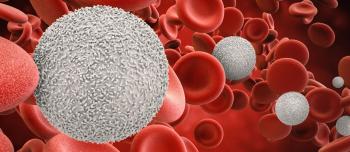The hemophilia treatment center (HTC) at Nationwide Children’s Hospital (NCH) in Columbus, OH, has spearheaded the development of a virtual reality game that is designed to provide a unique distraction for children as they receive intravenous infusions of clotting factor product. The game is called Voxel Bay and it was created through a collaborative effort by HTC staff, design experts at NCH and students from The Ohio State University.
The game, which is geared to children with hemophilia who are adverse to the needle sticks necessary for factor infusions, is now being tested in a pilot study at NCH to determine how effectively the game can be employed in a clinical setting. The game immerses pediatric patients in a fun, virtual world replete with penguins, pirates and hermit crabs.
“I work with pediatric patients with bleeding disorders and know all too well the fears and anxiety that they and their families experience related to frequent needle sticks,” said Amy Dunn, MD, Director of Hematology at NCH. “I took this problem to our incredible design team and asked them to help our hemophilia team create a solution that would be cost-effective, friendly, safe, engaging for children of any age, and help with adherence to treatments ultimately leading to better outcomes.”
Charmaine Biega, RN, a nurse at NCH for almost 30 years, recognized the game’s utility very quickly through one of her patients. “Brody just started getting his treatments through IV on a regular basis and was having a really rough time,” said Biega. “But the first time he used the game in clinic, he was so completely engaged in the game when the IV was administered, he just barely flinched. The difference in how patients react during a procedure when they are playing these interactive games is remarkable.”
Those administering the pilot study, which is funded by a grant from the National Hemophilia Foundation, are collecting preliminary data on the game’s usability and likeability from parents, patients and nurses. Investigators are also looking at further applications, such as use i- home settings for regular prophylactic infusions.
“The feedback we have gotten so far has been really positive,” said Dunn. “As ‘One Team’ we designed an approach that is truly engaging and immersive for kids and is customized to their needs, and we believe it will really make a difference in their treatment and outcomes.”
Source: News-medical.net.com, October 6, 2016





